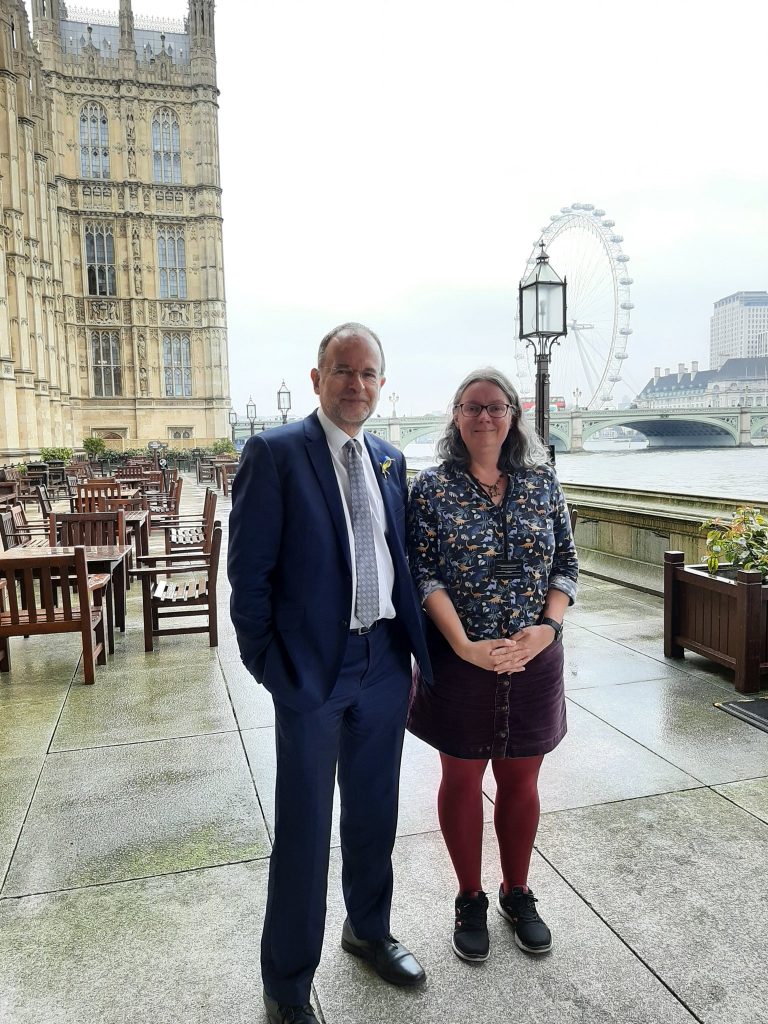
A couple of years ago (which seems FOREVER given how time seems to have become skewed with all the COVID disruption) I was asked to curate the @RealSci_Nano Twitter account for a week. The process was pretty simple – I just had to take over the account and Tweet about what I do… For anyone considering taking a turn, this might mean Tweeting about your research, your motivations for doing what you do, how you got into it, or anything else you think people would like to hear about. As part of the whole process there was also a blogpost made up of my answers to a list of questions, as well as a podcast where I got to chat to one of the team about all kinds of relevant topics. You can see and hear more about this over at https://thesciencetalk.com/2021/06/29/candice-majewski/ if you’re interested.
My reason for saying yes was partly that I appreciate the existence of organisations that share all things Scientific, and that for these organisations to exist means they need us to contribute and get involved. I also think it’s really good for us as Scientists and Engineers to get more practice at communicating what we do to a range of different audiences and in different formats. It’s something I encourage my team to do as well, so I guess it’s also important to ‘practice what you preach’!
Since then a lot of things we’d normally do have been pretty disrupted, and in particular things like in-person meetings, outreach events and so on. Like many people I’d been looking forward to a time when those things became possible again, but I’d also been thinking recently that one group of people I haven’t had much to do with was the Government and other top level policy-makers. So when I saw a call for participants for the Royal Society’s Pairing Scheme (https://royalsociety.org/grants-schemes-awards/pairing-scheme/) I was quick to apply!
According to the blurb on the website:
‘Each year 30 research scientists are paired with UK parliamentarians and civil servants. They learn about each other’s work by spending time together in Westminster and the researcher’s institutions. Those taking part gain an insight into how research findings can help inform policy making, and come away with a better understanding of how they can get involved.’
Now all of that is completely true, but doesn’t really begin to do justice to this scheme. Over the course of a few days in London we had talks and discussions from a range of people in various policy-related positions, heard about the various ways we can provide expertise and evidence to the Government, and even got to run a mock Select Committee hearing. Particularly interesting was thinking about the almost symbiotic relationship between Science and Policy – policy-makers need expert advice from Scientists about all manner of different issues, but we also need policy-makers to recognise our value in order to convince them to keep investing in Scientific research.
As you might expect, a real highlight was getting to spend time with an MP or civil servant and see what exactly it is that they do! I was lucky enough to be paired with our local MP Paul Blomfield, sitting in on some of his meetings, hearing about the causes he’s championing (ranging from supporting young carers through to pushing the Government on the situation in Ukraine) and the ways in which he engages with his constituents. Through him and his excellent researcher, Rosie, I got a great insight into the multiple activities our MPs are involved in on any given day and the huge amounts of work going on ‘behind the scenes’ to get things started and keep them progressing.
One other highlight was getting to watch Rachel Oliver (and others!) giving evidence about diversity and inclusion in STEM to the The House of Commons Science and Technology Committee. I’ve known Rachel for some time but it was completely by chance that our time in London coincided with this session. It was great to be able to watch her speak, but also to see how engaged the committee members seemed to be – it really felt like they were listening and taking it all in, and that they were motivated to do something about it.
As if all that wasn’t enough… I also got to attend Prime Minister’s Questions (in this case Deputy PMQs) and take a guided tour of the Palace of Westminster. I’d highly recommend taking that tour if you’re ever nearby – it was fascinating to hear the history of the place as well as a bunch of interesting anecdotes. And, because it would be rude to visit London and not see a West End show, I also managed a sneaky trip to Her Majesty’s Theatre to see The Phantom of the Opera.
I’ll be honest, I left London feeling pretty exhausted, but I came away with a renewed sense of excitement about engaging with Policy and confidence that there are ways in which I can do this. Of course an added bonus was getting to meet all the other participants, who came from such a range of Scientific backgrounds, all of which were super interesting to hear about.
I’m not sure when applications for the next round of the scheme will open, but I’d really recommend it to anyone who’s interested in how they might be able to engage more with the Government and other policy-makers. And of course I’m happy to talk to anyone who wants to hear more about it – feel free to get in touch!